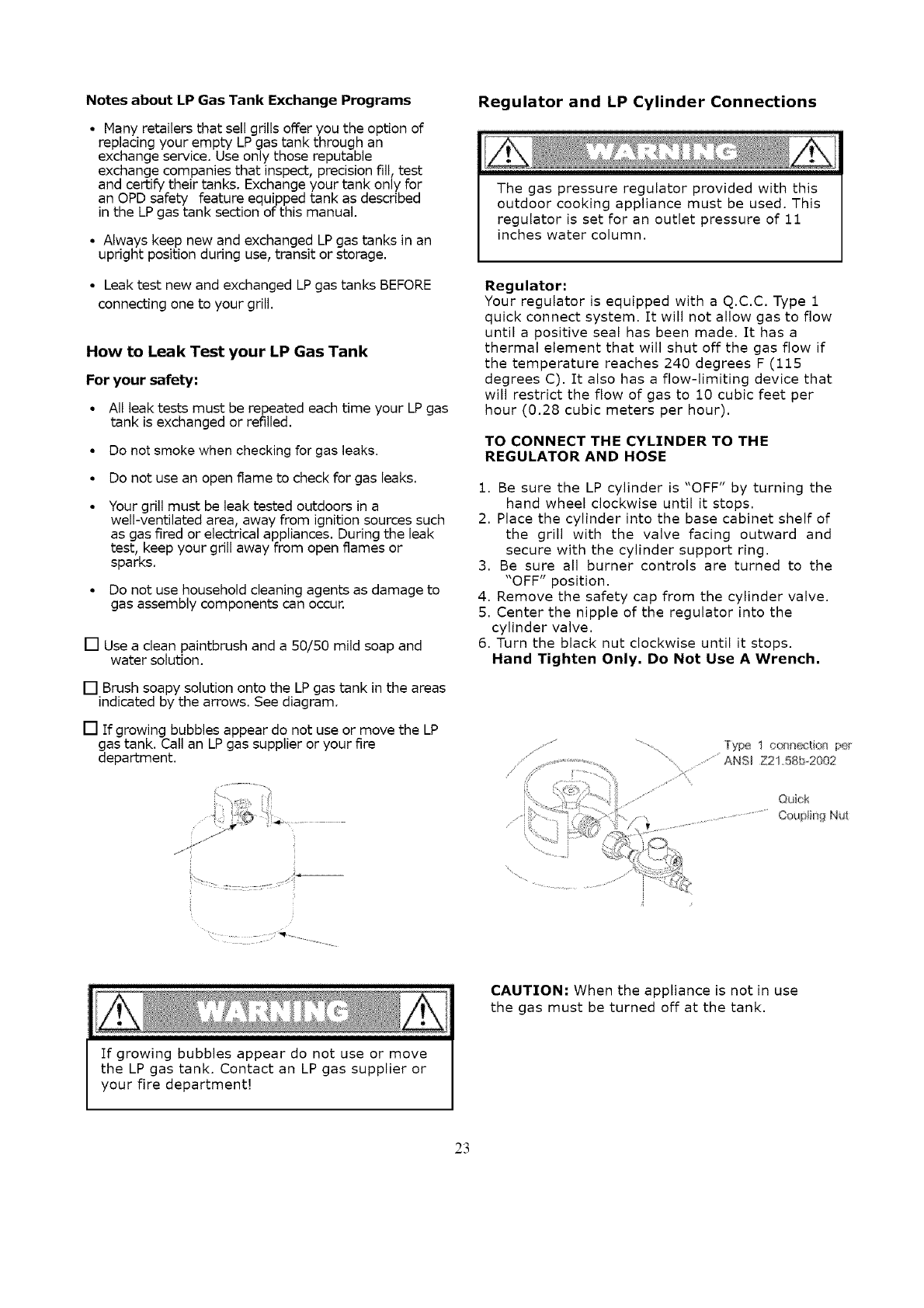Special offers from our partners!

Find Replacement BBQ Parts for 20,308 Models. Repair your BBQ today.

Notes about LP Gas Tank Exchange Programs
• Many retailers that sell grills offer you the option of
replacing your empty LP gas tank through an
exchange service. Use only those reputable
exchange companies that inspect, precision fill, test
and certify their tanks. Exchange your tank only for
an OPD safety feature equipped tank as described
in the LP gas tank section of this manual.
• Always keep new and exchanged LP gas tanks inan
upright position during use, transit or storage.
• Leak test new and exchanged LP gas tanks BEFORE
connecting one to your grill.
How to Leak Test your LP Gas Tank
For your safety:
• All leak tests must be repeated each time your LP gas
tank is exchanged or refilled.
• Do not smoke when checking for gas leaks.
• Do not use an open flame to check for gas leaks.
• Your grill must be leak tested outdoors in a
well-ventilated area, away from ignition sources such
as gas fired or electrical appliances. During the leak
test, keep your grill away from open flames or
sparks.
• Do not use household cleaning agents as damage to
gas assembly components can occur.
[] Use a clean paintbrush and a 50/50 mild soap and
water solution.
[] Brush soapy solution onto the LPgas tank in the areas
indicated by the arrows. See diagram.
[] If growing bubbles appear do not use or move the LP
gas tank. Call an LP gas supplier or your fire
department.
Regulator and LP Cylinder Connections
The gas pressure regulator provided with this
outdoor cooking appliance must be used. This
regulator is set for an outlet pressure of 11
inches water column.
Regulator:
Your regulator is equipped with a q.c.c. Type 1
quick connect system. It will not allow gas to flow
until a positive seal has been made. It has a
thermal element that will shut off the gas flow if
the temperature reaches 240 degrees F (115
degrees C). It also has a flow-limiting device that
will restrict the flow of gas to 10 cubic feet per
hour (0.28 cubic meters per hour).
TO CONNECT THE CYLINDER TO THE
REGULATOR AND HOSE
1. Be sure the LP cylinder is "OFF" by turning the
hand wheel clockwise until it stops.
2. Place the cylinder into the base cabinet shelf of
the grill with the valve facing outward and
secure with the cylinder support ring.
3. Be sure all burner controls are turned to the
"OFF" position.
4. Remove the safety cap from the cylinder valve.
5. Center the nipple of the regulator into the
cylinder valve.
6. Turn the black nut clockwise until it stops.
Hand Tighten Only, Do Not Use A Wrench,
',,,%
Type I onsection p_
....."ANSI Z21,58bo2002
If growing bubbles appear do not use or move
the LP gas tank. Contact an LP gas supplier or
your fire department!
CAUTION: When the appliance is not in use
the gas must be turned off at the tank.
23


















